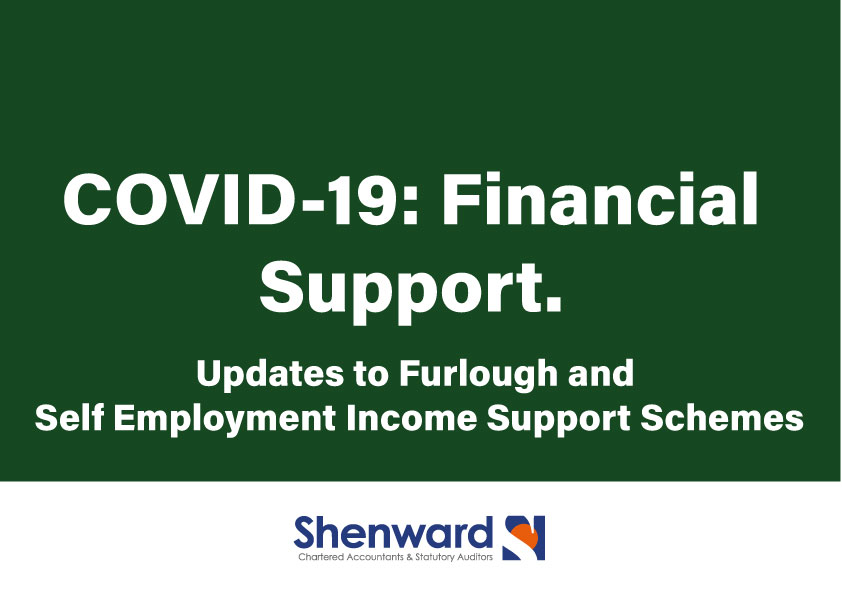How will the furlough scheme change from July?
Since the Coronavirus Job Retention Scheme (CJRS) officially launched on 20 April it has enabled businesses to keep valued employees whilst facing the financial challenges brought about by the pandemic.
Chancellor Rishi Sunak has been clear about the fact that the government has always intended to review the scheme over the coming months, which has led to many rumours within business communities about how the scheme will change.
Fortunately, business owners and employers can now make clear decisions about what actions to take next as the government has confirmed that it will continue to pay CJRS grants from 1 July but will introduce a number of changes.
How will the furlough scheme change for businesses?
You can bring furloughed employees back
From 1 July, you will be able to bring furloughed employees back into work. This will be a relief for both employees and employers, who can start returning to some level of normality.
Employees can work part-time on a flexible basis
You can bring furloughed employees back for any amount of time and any shift pattern, which is known as a ‘flexible furlough’. This means that if you want an employee to come back but are concerned about affording full-time wages, then you can agree to a number of hours for them to work. For example, if an employee works 40 hours, 5 days a week, you could ask them to work for 2 days a week (16 hours).
You will pay for the hours they work
If you do bring a fully furloughed employee back on a part-time basis, you will pay them their normal wage for these hours including NIC and minimum pension contributions.
For the hours they do not work, you will claim furlough pay at 80% of the normal wage. This may mean that you will need to carefully manage payroll if you do make this decision.
The government grants will gradually decrease
As part of its strategy to restart the economy, the government will start to decrease the levels of grants that it is paying in monthly stages.
While the government will still cover the same level of grant for July (80% of wages to a maximum of £2,500pm), it will gradually decrease the grant from August until it closes the scheme on 31 October 2020.
Throughout this period, furloughed employees will still receive 80% of their wages but employers will have to start contributing to this.
This is how each stage will look like this:
- From 1 August, employers can no longer claim Employer NI and pension contributions, but the government will continue to pay 80% of wages.
- From 1 Sept, employers will have to contribute 10% of wages, while the government will contribute 70%.
- From 1 Oct, employers will have to contribute 20% of wages, while the government will contribute 60%.
The conditions for furloughing will also change
From 1 July, the conditions for applying for the scheme will also change.
- You will only be able to claim for furlough grants for employees that you have successfully claimed for before.
- The employee must have been previously furloughed for at least 3 consecutive weeks between 1 March and 30 June. So, if you had furloughed an employee on the 10 June, they will be eligible, but not after this date as this will not meet the minimum of 3 consecutive weeks.
- The cap for the number of employees that you can furlough in a single claim is based on your previous claims. So, if you submitted three monthly claims and the total number employees furloughed in each respective claim was 30, 20 and 50, the maximum number of employees you can furlough in one claim is 50.
- Although flexible furlough agreements can last any amount of time, unless otherwise specified the period that you claim for must be a minimum of 7 days.
What does this mean to you as a business owner and employer?
You should support home working or make a safe workspace
If you have employees returning to work from being furloughed, then it is your responsibility to ensure that they are working in a safe work environment.
If possible, do your best to get your employees set up so they can work from home. If this is not possible, then ensure that your work environment is prepared so people can maintain social distancing and other measures.
The government provides in-depth guidance on safe working during the coronavirus which includes working in offices, factories, labs, shops and vehicles.
You should spend some time breaking down the calculations
If you have agreed to put your employees on a ‘flexible furlough’, rather than a full furlough then you will have to spend some time to ensure that they are being paid the correct amount.
You will have to calculate what they are owed in terms of full wages and 80% furlough payments.
If you have been making the claims since April you will probably be familiar with the full list of steps to take before making a claim.
The government has now included guidance on the steps to take to calculate your employees usual hours and furloughed hours.
There is also an example of how to make these calculations, which breaks down each stage including calculating usual hours, furloughed hours, NICs and pension contributions.
Be clear about your agreements with employees
It is advised to put your new flexible furlough agreement with your employees into writing, which must be done in accordance with pre-existing employment law.
Be clear about your criteria for selecting employees
Take care when selecting your criteria for selecting which furloughed workers will return part-time and defining their hours, make sure that you highlight these so that they are fair, reasonable and objective and be wary of discriminating.
Be wary of scams
It is important now, more than ever, as we all get used to working remotely to maintain due diligence when it comes to cyber security.
There have been many reported cases of businesses who have fallen foul of a scam by fraudsters exploiting the challenging situation that we are all facing.
One scam comes in the form of a phishing email scam pretending to be from HM Revenue and Customs. The intention is to trick business owners into providing personal and financial details.
If you suspect a potential scam, you can report it to Action Fraud.
Remember: support is always available from your family-run accountants and business advisors
These are difficult times and we are doing all that we can to support our clients and our community.
If you need advice and support with managing the complexities around furlough and payroll, understanding what the law requires of you as an employer, or support to boost cashflow, don’t be afraid to talk to one of our specialists at hello@shenward.com



